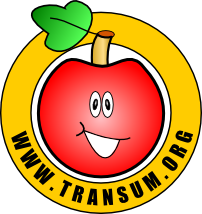Arrange the numbers on the yellow tiles so that the sum of the numbers in the vertical line is the same as the sum of the numbers in the horizontal line
1
2
3
4
5
6
How many different ways are there of doing this task?


Arrange the numbers on the yellow tiles so that the sum of the numbers in the vertical line is the same as the sum of the numbers in the horizontal line
1
2
3
4
5
6
How many different ways are there of doing this task?
A self-checking, interactive version of this activity with 30 different puzzles is here.
This is the
projectable version
of this activity. See
the link below to the
interactive version
designed for
pupils to use.
Topics: Starter | Arithmetic | Number | Problem Solving
How did you use this starter? Can you suggest
how teachers could present or develop this resource? Do you have any comments? It is always useful to receive
feedback and helps make this free resource even more useful for Maths teachers anywhere in the world.
Click here to enter your comments.
Previous Day | This starter is for 3 February | Next Day
Sign in to your Transum subscription account to see the answers
Your access to the majority of the Transum resources continues to be free but you can help support the continued growth of the website by doing your Amazon shopping using the links on this page. Below is an Amazon link. As an Amazon Associate I earn a small amount from qualifying purchases which helps pay for the upkeep of this website.
Educational Technology on Amazon

|
Teacher, do your students have access to computers such as tablets, iPads or Laptops? This page was really designed for projection on a whiteboard but if you really want the students to have access to it here is a concise URL for a version of this page without the comments: Transum.org/go/?Start=February3 However it would be better to assign one of the student interactive activities below. |
|
Here is the URL which will take them to the interactive version of this activity with 30 different variations.